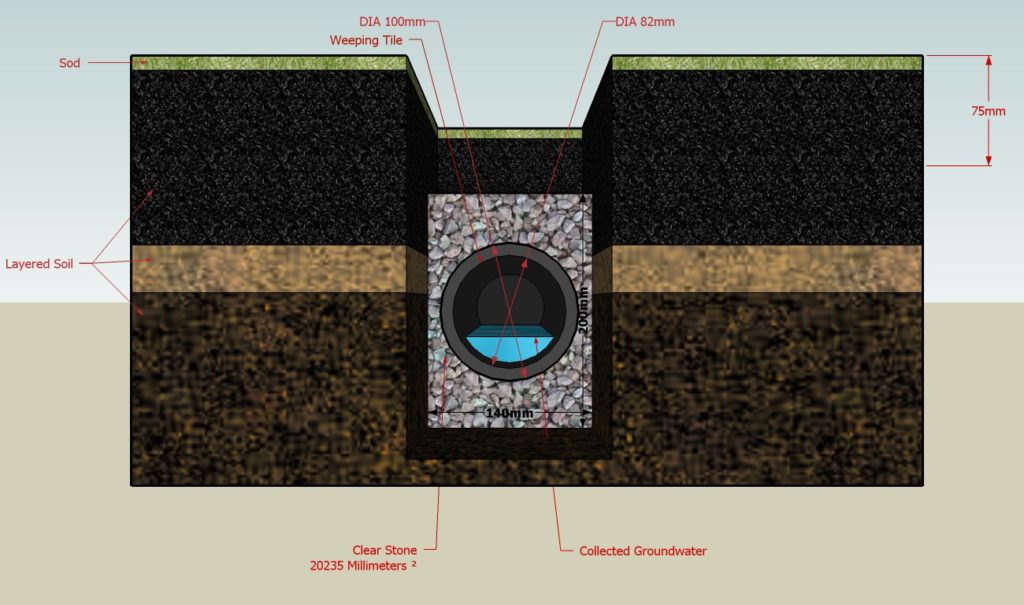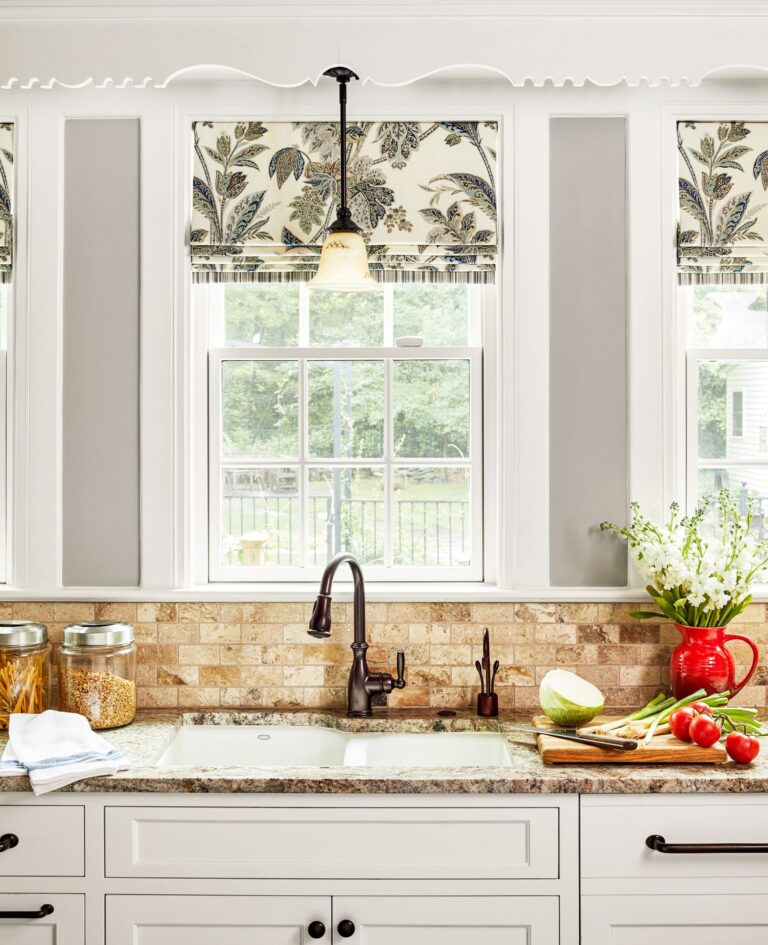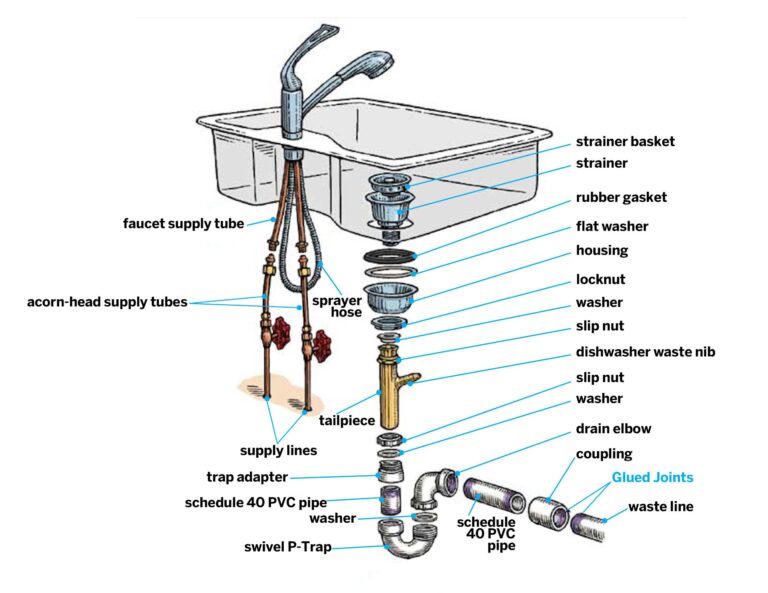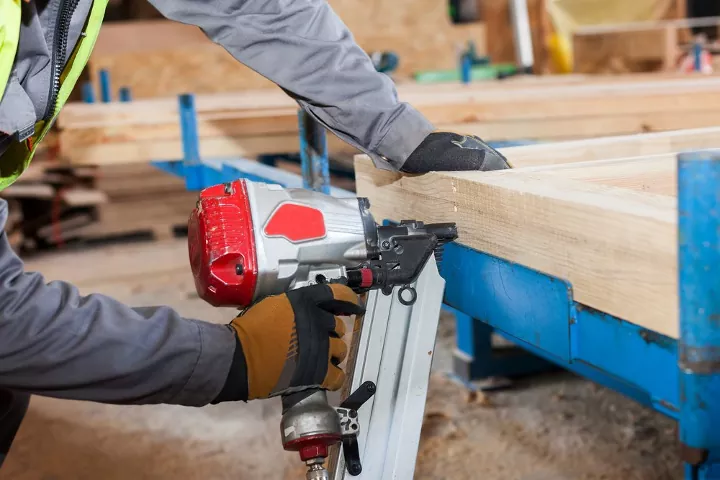French Drain Vs Channel Drain
A French drain or a channel drain is an effective way to help divert surface water away from your home. Both systems are designed to collect surface water and channel it away from the foundation of your home, preventing it from causing damage. French drains and channel drains are often used in conjunction with sump pumps and other drainage solutions. Each system has advantages and disadvantages. Understanding the differences between French drains and channel drains will help you decide which one is best for your home.
Definition of French Drains and Channel Drains
When it comes to solving drainage problems, it can be difficult to decide which solution is best for you. French drains and channel drains are two popular solutions used to help manage water runoff and reduce the risk of flooding. But what is the difference between these two drainage solutions?
French drains are trenches filled with gravel or other porous material, which provide a space for water to collect and flow away. This type of drain is typically used to redirect surface water away from the house, pool, or garden. They also help to reduce the risk of waterlogged soil, and can be used in combination with a sump pump to further protect against flooding.
Channel drains are a type of linear drainage system. They are usually made from plastic or metal and feature a grated top and a sloped base, which collects and directs surface water to a suitable drainage point. These drains are ideal for areas prone to flooding, as they provide a quick and reliable way to remove excess water. Additionally, they can be installed alongside driveways, walkways, and patios to protect against pooling water.
When it comes to choosing between French drains and channel drains, it all depends on the specific needs of each property. French drains are great for redirecting water away from the home, while channel drains provide the best protection against flooding. Ultimately, both solutions are effective at solving drainage problems, so it’s important to weigh up your options and select the best solution for you.
Overview of Advantages of French Drains
and Channel Drains
A French Drain and a Channel Drain are two of the most popular drainage solutions for homeowners who are looking to prevent water damage and mold growth in their homes. Both types of drains effectively divert water away from the foundation of a home, but there are a few key differences between the two that you should consider before selecting the best system for your needs.
A French Drain is a buried perforated pipe that is filled with gravel and is designed to direct water away from the foundation of a home. They are typically installed at the base of a home’s foundation and are effective at diverting surface water away from the home. The gravel filled pipe also serves as a filter for large particles, helping to keep your home’s foundation free from dirt and debris.
In comparison, Channel Drains are made from a single piece of plastic and are designed to collect and divert water away from an area. They are typically installed along the base of a driveway, patio, or walkway and serve as an effective way to prevent water from pooling in low-lying areas. Channel Drains are also easy to install and maintain, making them a great choice for homeowners who are looking for an affordable drainage solution.
When it comes to deciding between a French Drain and a Channel Drain, it’s important to consider the specific needs of your property. If you’re looking for an effective way to divert surface water away from your home, then a French Drain is probably the best option. However, if you’re looking for an easy to install and maintain drainage solution for your driveway, patio, or walkway, then a Channel Drain is the way to go.
Overview of Advantages of Channel Drains
When it comes to your outdoor drainage system, you need to consider the advantages that both French and channel drains can offer. Channel drains offer several unique advantages over French drains, making them a great choice for many homeowners. This article will provide an overview of the advantages that channel drains can provide, including better water flow, increased durability, and faster installation.
Water flow is an important aspect of any outdoor drainage system, and channel drains offer superior performance in this regard. Unlike French drains, which are usually excavated and filled with gravel, channel drains are typically installed with a shallow base, allowing water to move through the system quickly and efficiently. The absence of gravel also reduces the risk of clogging, meaning that the drainage system will remain free-flowing and efficient for longer.
Channel drains are also a better choice when it comes to durability. Unlike French drains, which are prone to cracking and shifting over time, channel drains are made from durable materials such as PVC or ABS plastic that will not corrode or break down over time. This makes them a much better long-term investment than French drains.
Finally, channel drains are much easier to install than French drains. Not only do they require less labor and materials, but they can also be installed much more quickly than French drains. This makes them a great choice for homeowners who need to install a drainage system in a hurry.
From superior water flow to increased durability and faster installation, channel drains offer a variety of advantages over French drains. Whether you need to replace an existing drainage system or you’re looking to install one from scratch, channel drains are a great choice for any homeowner.
Comparative Analysis of French Drains and Channel Drains
Drains are an essential component of a home’s infrastructure, providing a safe and efficient way to remove excess water from the landscape. French Drains and Channel Drains are two of the most popular types of drains used in residential and commercial applications. Both are effective in draining water away from areas where it can cause damage, however, there are a few differences between the two. This article provides a comparative analysis of French Drains and Channel Drains, discussing their advantages, disadvantages, and differences.
French Drains provide a great solution for controlling water runoff and have many benefits. They are relatively easy to install, require minimal maintenance, and are cost-effective. Furthermore, they are typically buried underground, which helps to prevent them from clogging. On the other hand, Channel Drains are more effective at moving large amounts of water and are designed to stand up to heavy traffic. They are also easily visible, making them a great choice for areas with high foot traffic.
The main differences between French Drains and Channel Drains are their installation, durability, and visibility. French Drains are typically installed underground, while Channel Drains are installed above ground. French Drains are also more durable, as they are less likely to become clogged or damaged. Conversely, Channel Drains are more visible, which helps to improve the safety of a property.
Ultimately, the choice between French Drains and Channel Drains depends on the needs and budget of the homeowner. French Drains are typically less expensive and require less maintenance, while Channel Drains are more durable and are better suited for areas with high foot traffic. By taking into consideration the advantages and disadvantages of both types of drains, homeowners can make an informed decision that meets their individual needs.

Design Considerations for French Drains and Channel Drains
When planning a drainage system for your home, there are two popular options to consider: French drains and channel drains. While they may seem similar, they have several key differences that make them better suited to different applications. Understanding what each one is used for and the design considerations associated with them can help you make an informed decision.
French drains are designed to capture surface water runoff and direct it away from areas prone to flooding. They are made of perforated piping that is surrounded by gravel and buried underground. This allows water to flow through the gravel and into the perforated piping, where it is then directed away from the area. French drains can be effective in areas with shallow water tables, and they are relatively cost-effective to install.
In contrast, channel drains are used to collect and divert water from hardscapes, such as driveways and patios. They are made of a slotted or grated trench system that is connected to a drainage pipe. Channel drains can be more expensive to install than French drains, but they are more effective in areas with high water tables, and they are more aesthetically pleasing.
When deciding between the two systems, consider the type of terrain you have and the amount of water that needs to be diverted. There are also design considerations, such as the type of piping and the number of outlets, that should be taken into account. Additionally, keep in mind the cost and installation requirements for each system. With the right information, you can choose the best option for your home’s drainage needs.
Installation Process of French Drains and Channel Drains
Installing French drains and channel drains is an important part of managing water runoff from your property. French drains and channel drains are two effective solutions for controlling water runoff and preventing flooding. Both systems are relatively easy to install, but there are some differences to consider when deciding which one is right for you.
French drains are installed by digging a shallow trench along the perimeter of the area that needs to be drained. The trench is filled with gravel or another permeable material and is then covered with a layer of soil or turf. A pipe is laid along the bottom of the trench and is connected to a drainage outlet at the lowest point of the area. The pipe collects water and transports it away from the area, allowing it to drain off without flooding.
Channel drains are installed in much the same way as French drains, but they are typically used in areas where runoff is particularly severe. Channel drains are dug deeper, allowing them to hold more water. The trench is then filled with coarse gravel and a pipe is laid along the bottom. The pipe is connected to a drainage outlet at the lowest point of the area. The pipe then collects the water and transports it away.
When deciding which system to use, it is important to consider the severity of the runoff and the amount of water that needs to be managed. While both systems are relatively easy to install, channel drains are more suitable for areas with heavy runoff, while French drains can generally handle lighter runoff.
Overall, French drains and channel drains are both effective solutions for managing water runoff and preventing flooding. By considering the severity of the runoff and the amount of water that needs to be managed, you can determine which system is right for you.
Maintenance Requirements for French Drains and Channel Drains
When it comes to drainage systems, there is a lot of confusion over the differences between French drains and channel drains. While they both serve the same purpose of redirecting water away from an area, the maintenance requirements for each are different. French drains are typically more labor intensive to maintain, as they require regular cleaning and monitoring for clogs or blockages. Channel drains, on the other hand, require less maintenance since they are built with a grate that collects debris, preventing it from entering the drain.
Both types of drains need to be inspected regularly to ensure that they are in top condition. French drains should be routinely checked for clogs or blockages and cleaned as needed. Channel drains, on the other hand, need to be checked for any debris that may have accumulated on the grate, which should be removed to prevent overflow or backups.
When it comes to maintaining French drains and channel drains, it is important to note that the frequency of maintenance depends on the environment and the amount of water being drained. If there is heavy rainfall or snow in the area, more frequent inspections and maintenance may be necessary. Additionally, it is important to check for any signs of wear and tear or erosion, as this can lead to significant damage if left unchecked.
Overall, French drains and channel drains are both effective drainage solutions that can provide years of dependable service. While French drains require a bit more maintenance, channel drains can provide a lower-maintenance option as long as the grate is regularly monitored and cleaned. By keeping up with regular inspections and maintenance, you can ensure that your drains are functioning properly and up to code.
Cost Comparison of French Drains and Channel Drains
When it comes to drainage solutions, cost is often a major factor in selecting the right system. French drains and channel drains are both popular options, but which is the more cost-effective option? To answer this question, let’s take a look at the costs associated with both systems.
French drains are typically less expensive to install than channel drains. This is because French drains are simpler systems that require fewer components and less labor. On average, French drains can cost anywhere from $2,000 to $5,000, depending on the size and complexity of the project.
Channel drains, on the other hand, can be more expensive to install due to the fact that they require more components and the labor can be more intensive. On average, channel drains can cost anywhere from $3,000 to $10,000, depending on the size and complexity of the project.
Both French drains and channel drains can be more cost-effective in the long run, as they can help prevent damage to your home and property due to flooding and water damage. However, due to the initial installation costs, French drains may be the more cost-effective option for smaller projects. For larger projects, channel drains may be the better choice. Ultimately, it’s important to consider your budget and the size and complexity of the project when deciding between French drains and channel drains.
FAQs About the French Drain Vs Channel Drain
1. What is the difference between a French drain and a Channel drain?
A French drain is a drainpipe surrounded with gravel or rock to create a drainage channel. A Channel drain is a pre-cast trench drain that has a built-in outlet for water collection.
2. What are the benefits of a French drain?
A French drain is an effective way to direct surface water away from a structure or area. It requires minimal maintenance and is relatively inexpensive.
3. What are the benefits of a Channel drain?
A Channel drain is more expensive than a French drain but can provide a longer-lasting solution. It is also easier to install, requires less maintenance, and can be used to collect and channel runoff from multiple areas.
Conclusion
In conclusion, French drains and channel drains are both effective drainage solutions for homes and businesses. French drains are the better choice for shallow, flat areas where water needs to be moved away from the house. Channel drains are more suitable for areas with gradual slopes or for landscaping needs. Both types have their own advantages and disadvantages and the best choice for your situation will depend on your specific needs.






